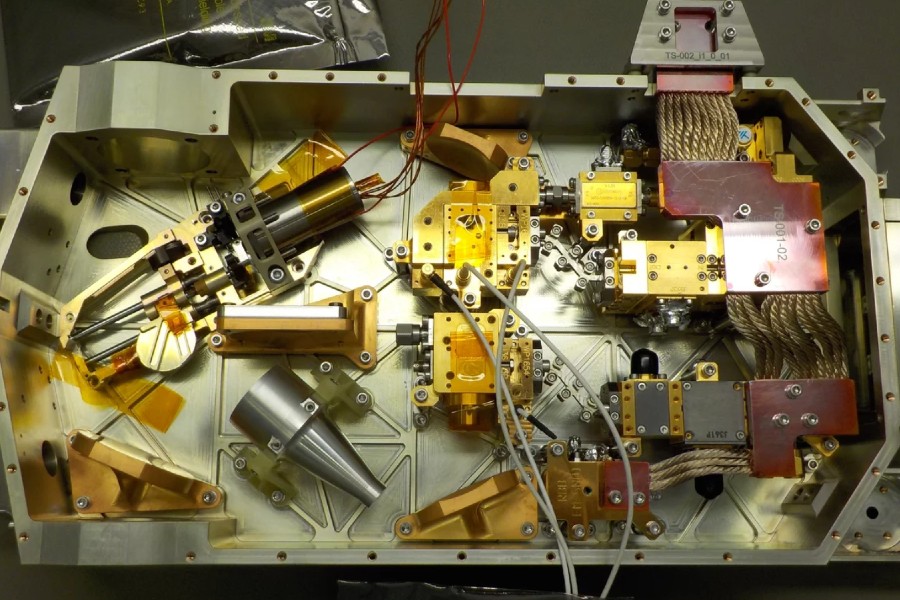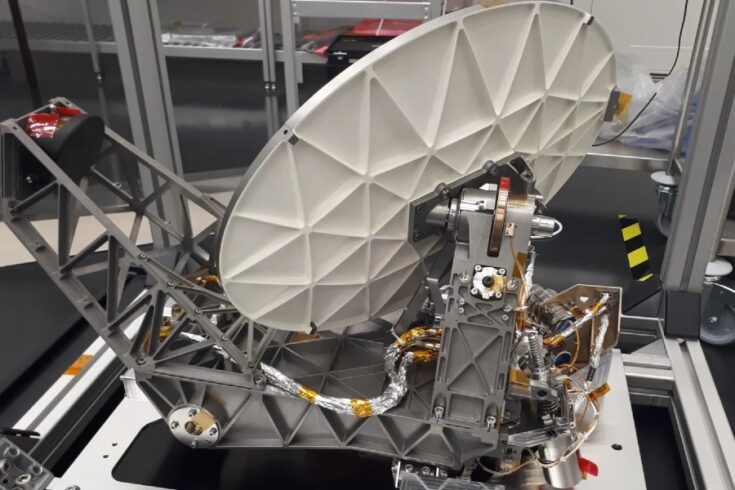Teratech Components Limited, a UK spin-out from the Science and Technology Facilities Council (STFC), is on its way to Jupiter as part of a space mission to learn more about its origins and moons.
JUICE, which launched in April this year, is a European Space Agency mission to make detailed observations of Jupiter and its three icy moons – Ganymede, Callisto and Europa.
Revealing the mysteries of Jupiter’s moons
Jupiter hosts over 80 confirmed moons so why are we interested in only three?
The ice moons of Ganymede, Callisto and Europa have liquid water beneath their surfaces, and having detected several minerals on these planets this could mean that, below their cold hard exterior, they harbour extra-terrestrial life. Ganymede has further confused scientists as it’s the only known moon in the solar system to have its own magnetic field.
With 10 state-of-the-art instruments on board, JUICE will allow us to further explore these three moons and Jupiter, hopefully unlocking their secrets.
Out-of-this-world detectors
Teratech’s onboard components are three diodes, that were developed at STFC’s Rutherford Appleton Laboratory (RAL).
These critical diodes make up part of the detectors which are installed on the Submillimetre Wave Instrument (SWI) that is on the scientific payload making its way to the Jovian system.
The SWI is integral in the measurement of the moon’s atmosphere, surfaces or sub-surfaces and the interaction of the atmosphere and Jupiter’s magnetosphere, the region around a planet that its magnetic field can be ‘felt’ the most.
From this data, scientists can determine the chemical history of these moons which will allow us to further determine the origins and evolution of the system of Jupiter.

Receiver unit opened up to display electronics. Credit: Teratech Components Limited
Detecting the atmosphere
The Teratech diodes were developed using the advanced Rutherford Appleton Laboratory Space clean room technologies, at STFC’s RAL. They are critical in the electronics for atmospheric detection, as they help mix the detected frequencies from the atmosphere with that of the ‘local oscillator’ (part of the electronics they help make up).
The device works almost identically to how the traditional analogue radio worked and follows the principle in which the telephone networks were set up.
Using this detector, scientists can then use the radio signals to determine many characteristics of the atmosphere.
Spin-out success
Teratech’s technology span out of work originating from STFC’s RAL Space department, with whom they still have strong partnerships, making use of their state-of-the-art clean rooms and labs.
Their aim was to develop diodes to be used in Earth observations to measure water vapour in the atmosphere from which you can determine temperature and pressures. They also received funding from the STFC Centre for Instrumentation
Dr Massimo Noro, Director of Business Development at STFC, said:
Teratech’s’ journey from STFC spin-out to a mission to Jupiter, is really exciting news for this pioneering company.
It is also a perfect example of how STFC’s world leading technology, teamed with the right business support in the early days, and in this case, Teratech’s location alongside RAL Space at the Harwell Campus, are all key to helping a company flourish.
I look forward to hearing the results of this ground breaking mission, knowing that Teratech is playing a truly critical and valuable role in its success.



